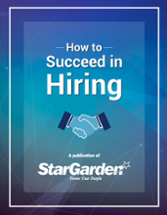Is the “Gig Economy” HR’s Friend or Foe?

At the dawn of the 21st century, the economy has shifted from a culture of full-time workers to an on-demand, “gig” economy. This model allows additional flexibility, with emphasis on crowd sourcing and peer to peer (P2P) connections. Uber is the poster child for this sort of shared economy, allowing people seeking transportation to directly connect with independent drivers. Crowd sourcing funding for start-up businesses and projects has become such a pervasive and acceptable part of the economy that even expectant parents are turning to sites like GoFundMe for donations to fund their maternity and child care expenses.
But allowing car ride sharing and enabling investments in start-up ventures aren’t the only ways the P2P gig economy is changing the normal course of business. There is an increasing trend for companies to use contract workers using direct-hire sites like Fiverr for freelancers or Wonolo for temp workers when they are unable to fill their needs for resources internally. This trend is especially true for IT talent. The specialized skill sets of most IT professionals are not only highly valued but also quite difficult to come by. In fact, finding and retaining the right IT resources is one of the major challenges facing organizations, for which many blame the gig economy.
The Effects of the Gig Economy on IT Resources
Today IT professionals are able to tap in to the many online platforms to easily land “gigs,” i.e., short term or temporary jobs, rather than being forced to seek full-time employment with an organization. The availability and ease of finding consistent contract work gives them the independence of choosing who they work for, when, at what price. A study conducted by Wakefield recently noted that around one-third of an organization’s total HR budget is dedicated specifically to recruiting and retaining IT talent. In this highly competitive market, companies must dedicate significant resources to compete with each other and lure talent away from the freedom of lucrative “gig” work. Companies face turnover of 25% of their IT department each year, on average, with top IT talent being approached by recruiters more than six times each month. The constant turnover not only impacts productivity but also renders an instability to organizations that affects the realization of strategic goals.
There is a marked competitive advantage to being able to deliver better technology solutions before others have caught up in the marketplace. However, gaining this advantage is highly dependent on the efficiency of your IT department and its ability to deliver. Abandonment of projects midway, arising from limited and inadequate IT capacity, costs businesses $3 trillion annually. In addition to loss of competitive advantage, these are actual losses companies incur directly related to deficiencies in IT department staffing. Therefore organizations continue to invest heavily in retaining IT talent, but more investment doesn’t necessarily translate into successfully meeting their IT needs. Innovative approaches to both retention and augmentation may help fill this gap.
Companies have increasingly been attempting to improve their retention and recruitment rates by allowing more flexibility in scheduling and working hours, being open to telecommuting, and coming up with creative work environment options. But organizations haven’t been able to get a handle on how to effectively compete with the gig economy. More than half of IT staffers have reported that they have recently worked in some kind of “gig”-style work arrangement. This is a concerning matter for senior leadership in organizations.
Changing Times Require Creative and Flexible IT Staffing Practices
Organizations are apprehensive of using contract workers or other freelance IT resources due to the perception that contract workers lack knowledge of the business and are less reliable. Before ruling out temporary, specialized workers and decreeing the crowd sourcing job market bad for organizations, however, it’s important to recognize some ways the gig economy can benefit companies. For example, it provides easy access to exactly whatever kind of specialized talent that organizations might seek. Because of this, gig workers might be an economical solution to filling the gap in IT department skill sets. Especially for small and medium size businesses, temporary augmentation to everyday IT resources can help enable quick innovation within in a tight budget. Another advantage of employing “giggers” is the nature of relationship. Companies can employ resources as necessary on a transactional basis versus the traditional contractual one, which gives both the employer and the gig worker the flexibility to exit the working relationship easily. Giggers also come without the additional overhead of full-time employees (like medical and leave expenses), which makes them more attractive to companies.
Organizations must realize that the coexistence of giggers with full-time employees can help solve resource deficiencies and allow them to more effectively run operations. This may require organizations to adopt a new mindset, and both HR and management should be prepared. It may be most beneficial for companies to have a few giggers as their “go-to” resources, allowing them to develop ongoing relationships that are mutually beneficial.
Organizations can leverage this new trend effectively as a risk-averse way to gain the competitive advantage they are seeking without over committing to permanent IT department resources. In many ways, crowd sourcing is empowering both organizations and employees, giving both the ability to “trade up.” This, after all, is what a market economy is supposed to do, and is likely the future of the tech-based 21st-century workplace.
Further Reading:
Attracting new talent is part art part science. In this ebook explore tools that can make your job easy. And learn techniques to attract talent, interview, and negotiate the final offer.

